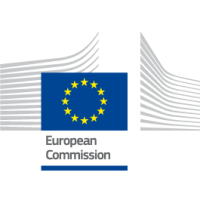
Maximizing Value from Professional Learning Networks
Learning is changing. Teacher learning in the form of continuing professional development increasingly takes place in networked and collaborative settings – boundaries for professional development are disappearing because of what technology now makes possible. Our learning is much less likely to be limited to a single geographic location or time of life.
Description
But how can we get better value from the various communities of practice and learning networks we choose or are guided to join?
It helps to know that there are many different types of communities of practice and learning networks for a start; and that a considerable body of research in recent years has helped identify the characteristics and practices that make such learning experiences more meaningful and useful to teachers and other involved in education.
The course Maximizing Value from Professional Learning Networks sets out to introduce participants to the most interesting and in some cases surprising findings on how networks actually work… and how we can tell the better ones from the rest.
The course aims to help participants become more ‘network aware’ and so gain a better appreciation of the collaborative and active nature of the learning that takes place in good networks and how to take advantage of this. It also introduces a framework that can be used to help gauge personal learning and development within a networked community or network – which will be useful to teachers thinking about setting up their own learning networks whether local to a school or reaching far beyond a single geographical setting.
Learning objectives
As a participant in this course, you should expect to:
- Learn about the characteristics and features of good Professional Learning Networks (PLN);
- Examine the practices and the nature of a number of strong learning networks and communities from across various counties and subject areas;
- Consider the interactional and psychosocial variables that contribute to the personal and professional learning experiences provided by PLNs and learning communities;
- Explore how to capture the value of the learning experiences provided by networks and teacher communities of practice;
- Reflect, discuss and share opinions on key topics of the 21st century teacher education and development through the course learning tasks offered at the end of each module and the final module task.
Methodology & assessment
The course participants will be assessed through the (short) course learning–tasks offered at the end of each module, and the final module task – which will include the option to consider either the personal benefits that can result from taking part in a professional learning network or the steps involved in designing a meaningful learning network for a community of teachers or other educators.
Certification details
Upon successful completion of the course a digital course certificate is awarded. The certificate shows the name of the learner and key course details such as the estimated learning hours, the learning objectives, and a link to the course homepage.
Additional information
-
Language:English
-
Target audience ISCED:Primary education (ISCED 1)Lower secondary education (ISCED 2)Upper secondary education (ISCED 3)
-
Target audience type:Head Teacher / PrincipalTeacherTeacher Educator
-
Learning time:5-10 hours

